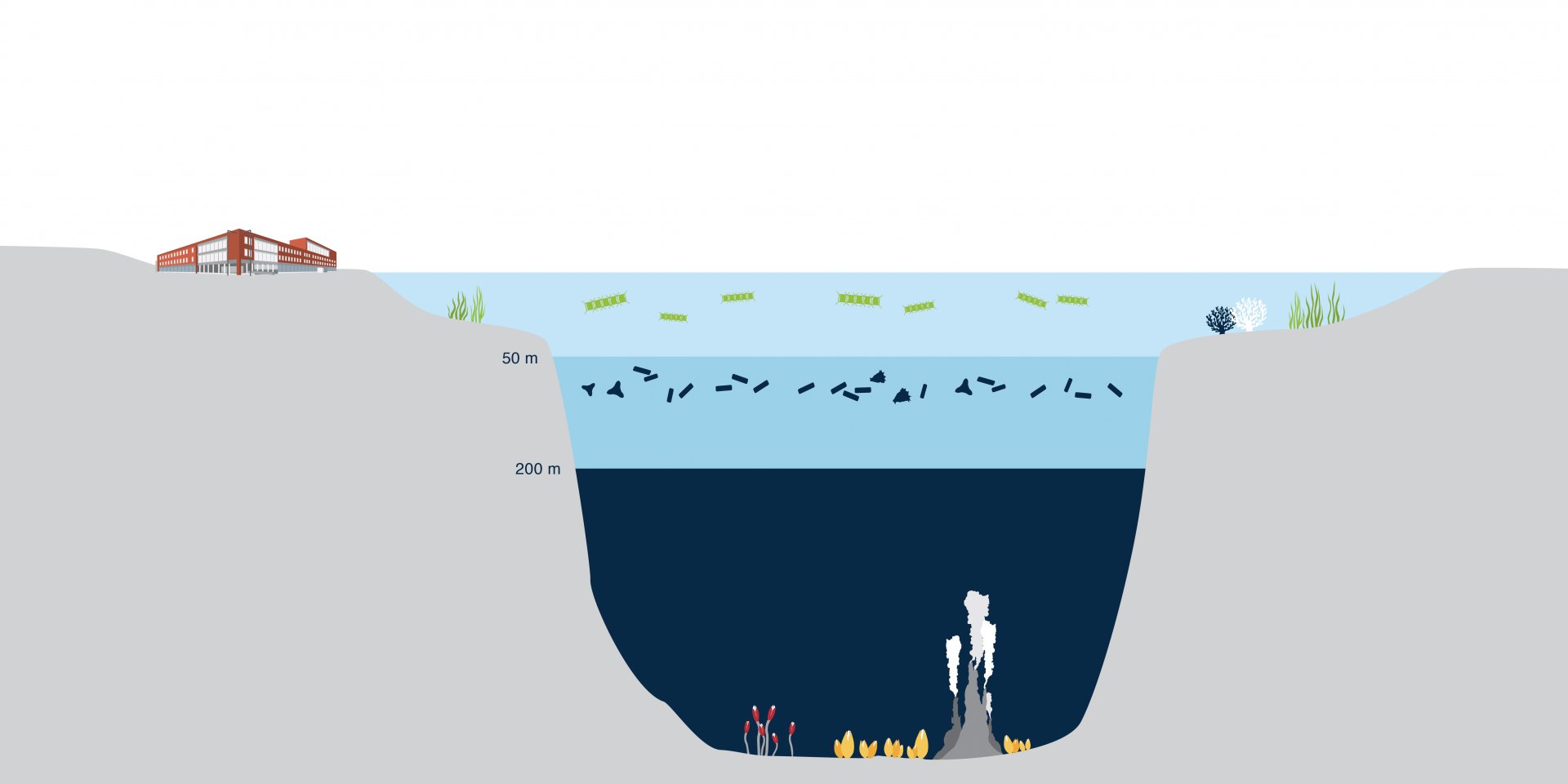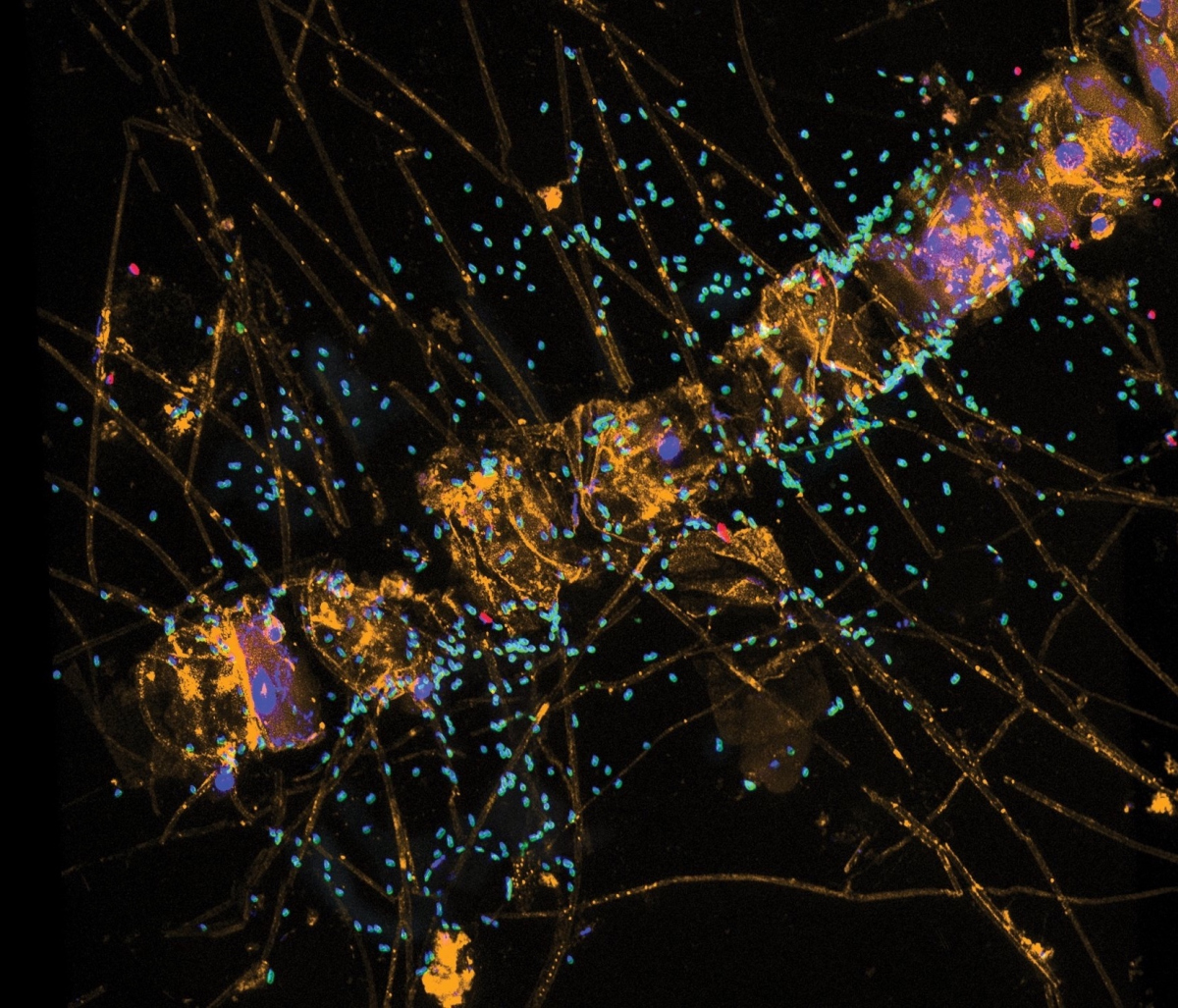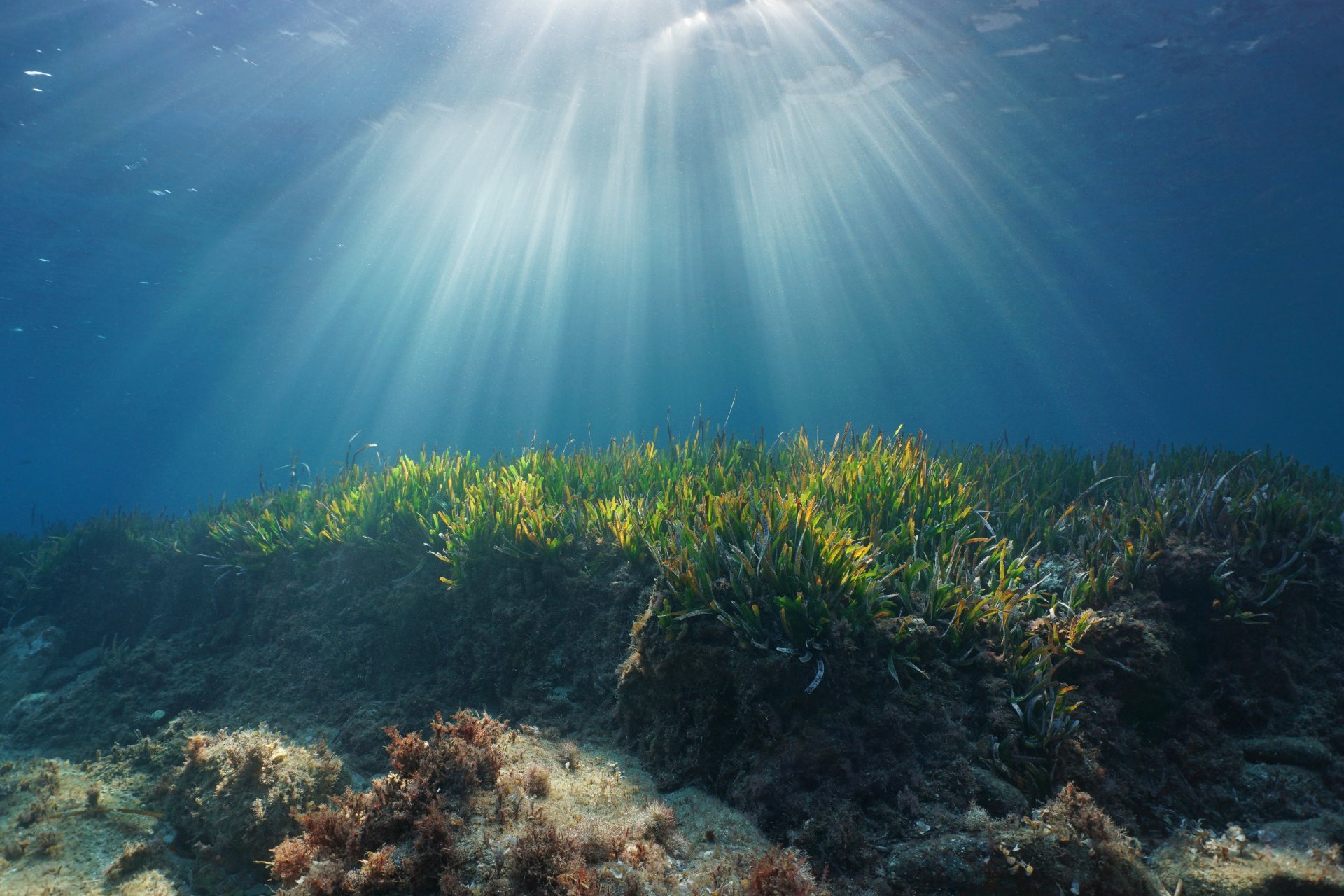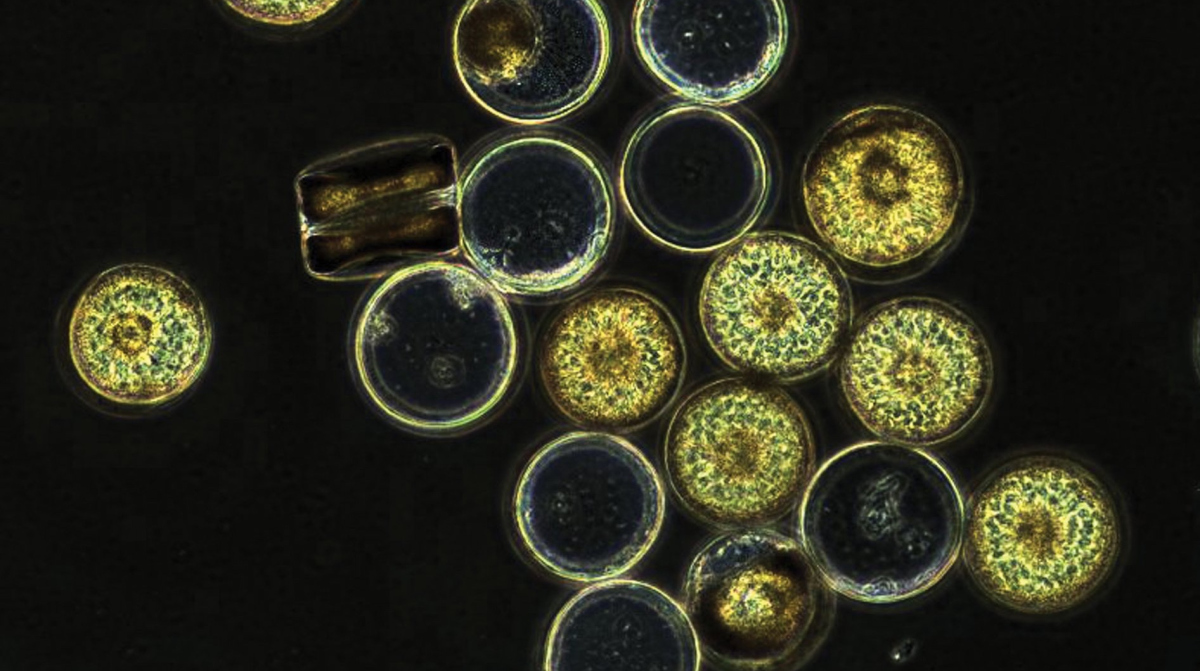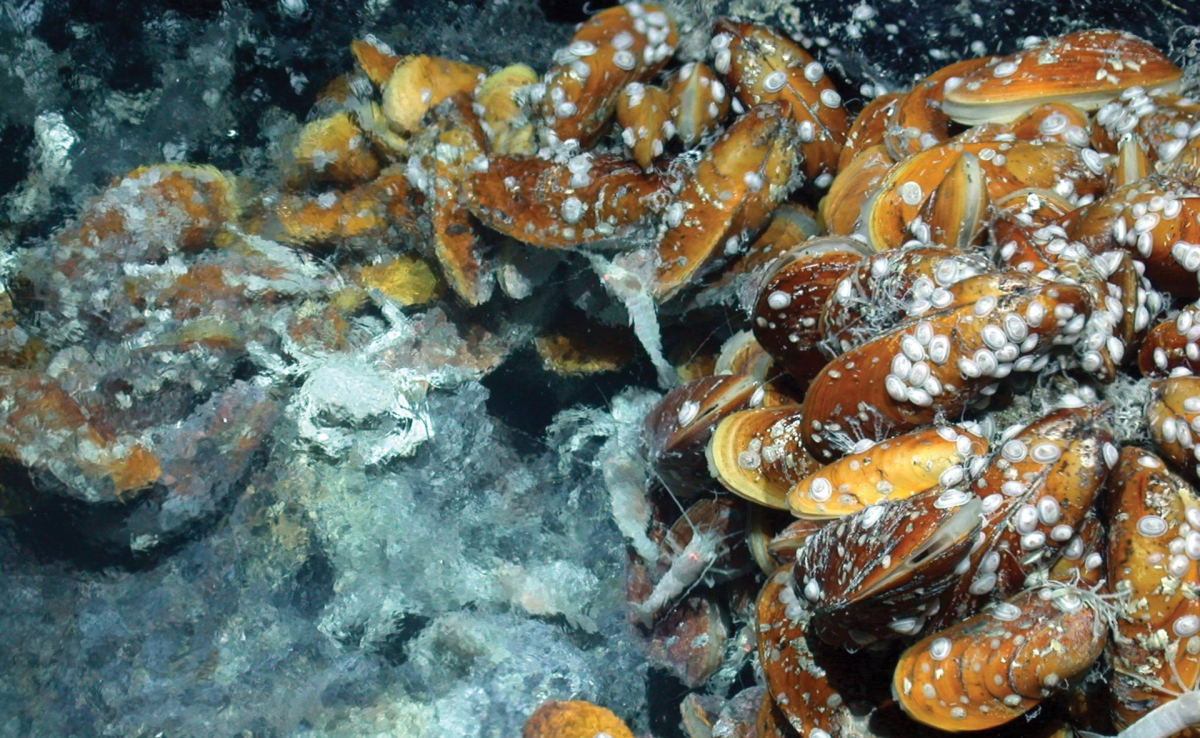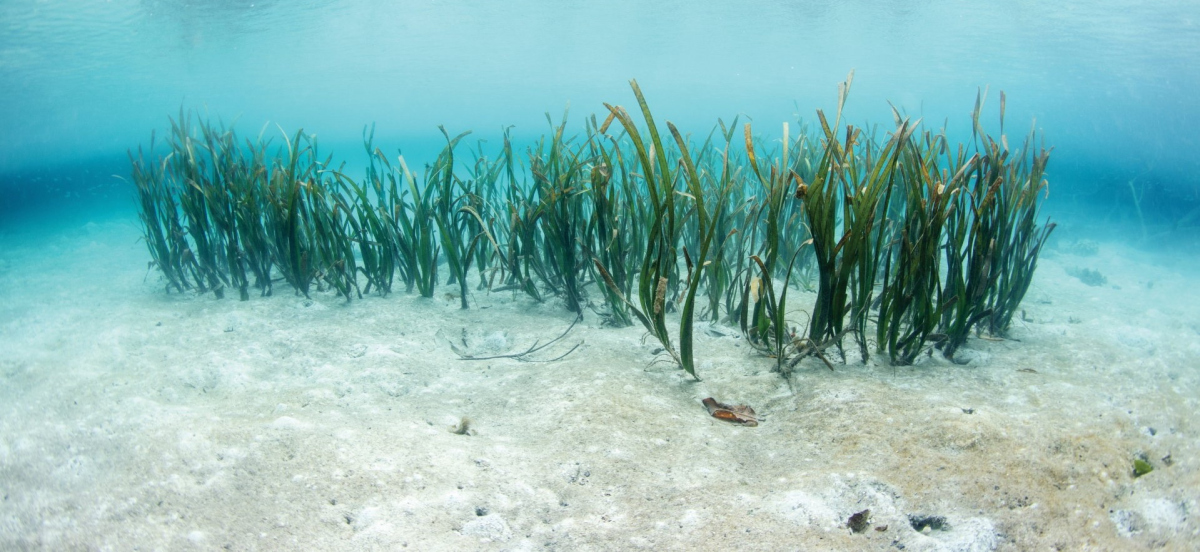- Research & Instruments
- What we study - Our research areas
What we study - Our research areas
Cosmos of minuteness
Microbiology focuses on microorganisms and their interactions with the environment. Who’s who and what does a specific species do? To find the answers to these questions, we analyze the microbes down to their smallest components – and continuously uncover amazing and fascinating results.
≈ 365,000 kilometres
is the length of coastline around the globe. This figure includes the coastlines of all continents and the majority of islands. Numerous small islands are not included – but even so, this is as long as nine times around the equator or as far away as the moon!
Small, but mighty
Microorganisms are small, but have a profound influence on all aspects of our planet and its inhabitants. Single-cell organisms, many of which cannot even be seen without a microscope, significantly influence life on this planet. In molecular ecology, we explore the diversity and function of these tiny puppet masters in Germany’s coastal Wadden Sea and in the open ocean, near the light-flooded surface and in the jet-black deep sea.
≈ 11,000 metres
is the depth of the ocean at its deepest point. It is in the Mariana Trench, a deep-sea trench in the West Pacific.
Microorganisms are small, but have a huge impact: Bacteria, viruses and other microbes have reshaped our planet throughout its history. Blue algae, for example, also known as cyanobacteria, caused the release of free oxygen by photosynthesis in Earth’s early history. Only then did it become possible for oxygen-breathing organisms to evolve. And that’s only one example: Microbes have a major impact on global element cycles – in the air, in the soil and in the oceans. As marine microbiologists, we study tiny organisms in the oceans, both in the water and beneath the seabed. Even the microbes living many kilometres under the seafloor, of which there are still numerous, little-known life forms, can affect the biochemistry our oceans. We aim to understand how the marine cosmos of minuteness functions and what drives it.
The clean-up crew is coming – the same bacteria clean up time after time
The days are getting longer, the temperatures are climbing, everything is turning green – including in the oceans: Every spring, tiny algae grow in the North Sea, an algal bloom begins. The algae bind carbon dioxide from the air by photosynthesis. After a while, they die and bacteria decompose their remains. Some of the absorbed carbon dioxide is released again. But how much exactly? To find this out, we first need to understand how the bacterial clean-up team works. While different algal species dominate the bloom each year, the same microscopic clean-up crew do duty again and again. Apparently, it is not the algal species that determines which bacteria preferentially multiply, but rather their ingredients, especially their so-called polysaccharides. If different algae contain the same or similar sugars, they can be broken down by the same bacterial enzymes.
Difficult to digest or elixir of life?
Crude oil, methane or hydrogen sulphide: These substances are anything but compatible to most lifeforms – but they are elixirs of life for some microbial specialists. Some bacteria, for example, can degrade petroleum with oxygen; that is, they feed on it. Others convert methane into carbon dioxide with the help of iron. As a result, further substances are released that can be exploited by other organisms. We explore the microbiological and chemical principles behind these processes: Which microbes do what, which are particularly efficient at it? What do they need to grow particularly well and can we promote their growth? It would then be possible to stimulate nature to clean itself, for example after an oil spill or sewage pollution.
The “we” wins
Collaboration for the benefit of all concerned: Sounds good, and it is. Such symbioses also exist between bacteria and animals. Together, they manage to populate even the most extreme habitats. For example, the deep sea – pitch black, icy cold and low in nutrients. The secret is called chemosynthesis: Bacteria use energy from the seafloor, for example, methane or hydrogen sulphide, for fixing carbon dioxide into sugars and other biomass with which they feed their symbiotic partners, e.g. worms and mussels.
Quid pro quo – not without my partner
At hydrothermal deep-sea vents, where hot, mineral-rich water flows from the seafloor, symbioses are everywhere. Photosynthesis is not possible here, because no sunlight can penetrate this deep. Instead of light, the microorganisms here use chemical energy, such as sulphide or methane, to fix carbon dioxide into biomass. In fact, quite a lot of biomass: Some tubeworms here grow to several metres in length – without ever eating even a single bite themselves. Instead, bacteria inside the tubeworms use sulphide from the vent water as an energy source to fix carbon dioxide into biomass, and the tubeworms live off the bacteria. Bacteria enter into similar “life agreements” with mussels, snails and small shrimp – but definitely not unselfishly: The bacteria live within their hosts in comfortable security and are always close to their nutrient source. Quid pro quo.
Here, the chemistry is good
Always something different, always something new: Life is in a state of constant change. We research the cycles of a variety of substances in the oceans, for example carbon and nitrogen. From the surface to beneath the seafloor. For this purpose, we focus on the individual cell at small scales, and on the entire ecosystem on a large scale. We examine who or what controls the processes involved, how they influence each other and what this means for the oceans today and in the future.
Cycle with a leak
Carbon controls the climate, nitrogen controls plentifulness: The nutrient nitrogen dictates how fast and profusely plants grow. In the oceans, nitrogen upwells from the deep sea to surface waters, where algal growth booms as a result. But freshwater from rivers, too, provides nitrogen compounds to the oceans. These are leached from agricultural fields – the more they are fertilized, the greater the input. This presents a risk, because this oversupply of nitrogen could turn the sea anoxic. Luckily, there are marine microbes that ensure a healthy chemical balance: So-called anammox bacteria, which break down nitrogen compounds. This releases nitrogen gas that escapes into the atmosphere. The oceanic food chain thus once again loses a good part of this growth-stimulating nutrient. This alters its global balance and, consequently, also that of carbon. The anammox leak must therefore be incorporated in long-term climate assessments.
